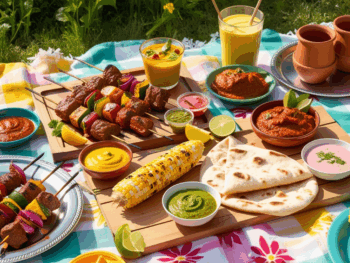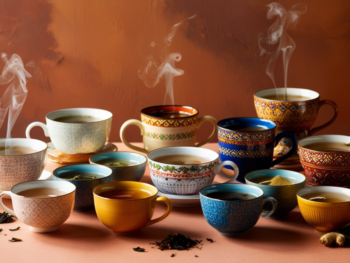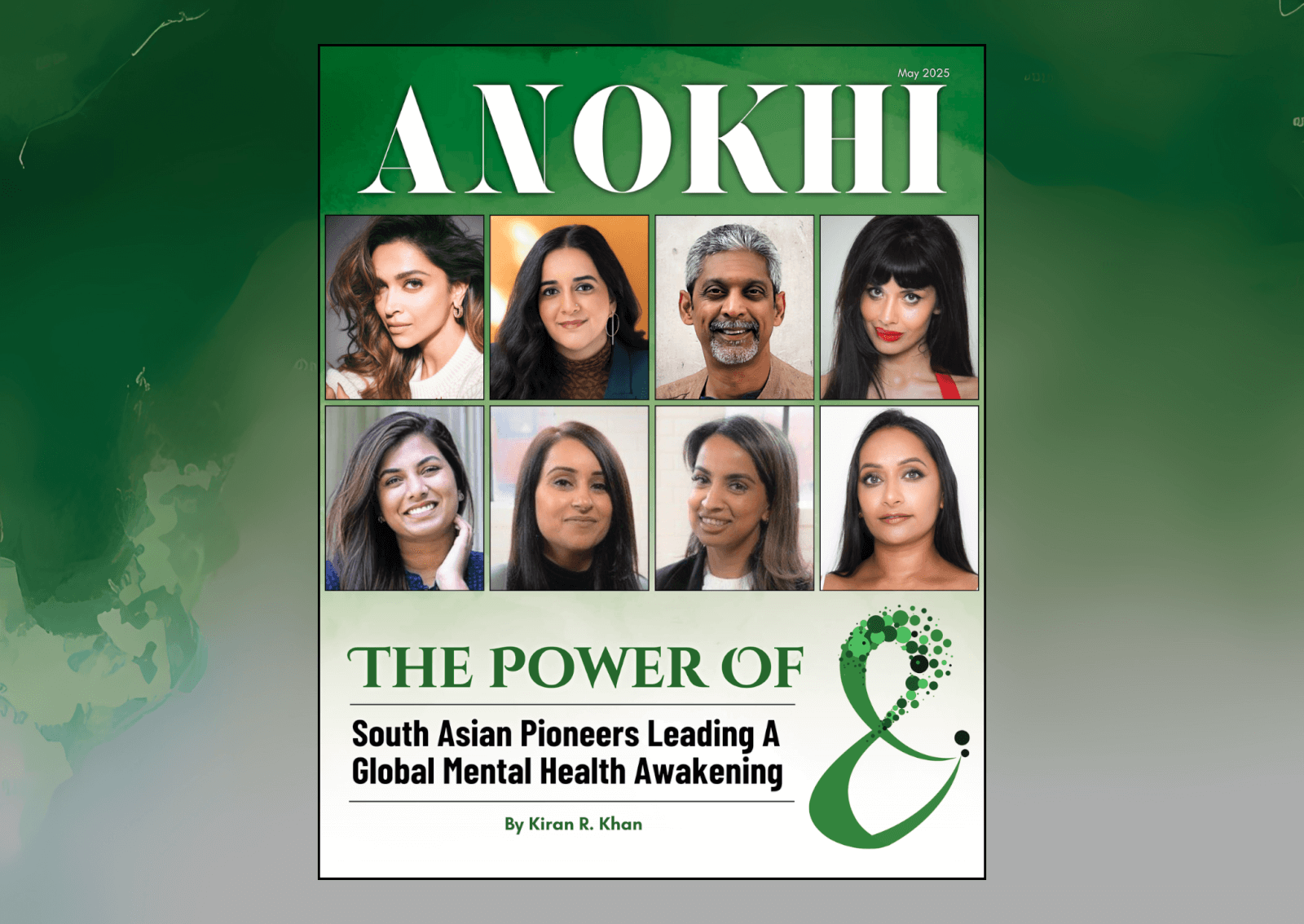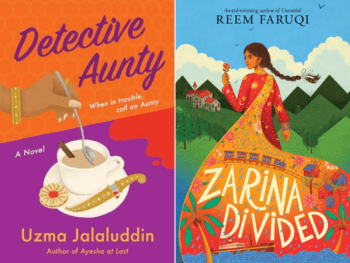
Dining Light
If you dined light for lunch, perhaps you are feeling extra healthy and virtuous today. And that’s supposed to be a good thing. However, according to a new study researchers say you are more likely to reach for a high-fat dessert or calorie-packed afternoon snack than your co-workers who feel they had a heartier meal.
In a study conducted by Brian Wansink, Ph.D., food psychologist and author of Mindless Eating, one group of diners were given an 8-inch roast beef and cheese sandwich in a wrapper from a deli chain known for its health-conscious options, and another group, an identical 600-calorie sandwich, but in packaging from a leading fast-food restaurant. The results: the group who ate the sandwich in the deli wrapper later consumed 200 more calories from chips, cookies, and other snacks than those who believed they downed fast food. Wansink explains that because the sandwich came from the deli, they assumed that it was low-calorie and they then compensated, thinking that having a light lunch entitled them to cookies and candy. Tsk tsk!
The take-home message: regardless of what you have eaten, take a minute to know how your body feels after a meal, rather than how you think you should feel. If you are still hungry then have a little something more. It’s about rewiring when your body tells you it’s full.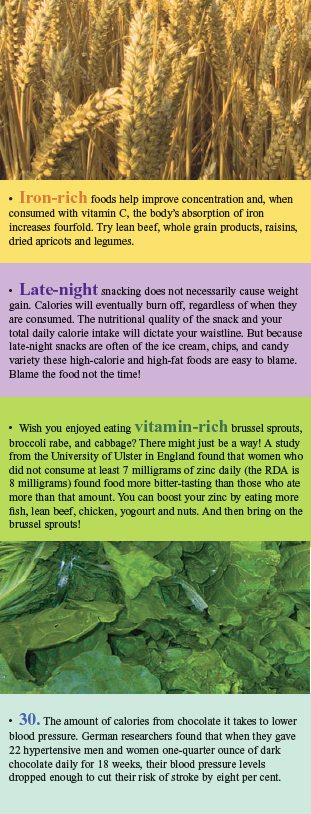
Magic Bullets
There are umpteen numbers of books and news flashes claiming that if you eat certain foods, you will prevent every disease, live forever, attract the opposite sex and so on. Fact is, all of these claims begin with just a morsel of truth extrapolated to a mountain of exaggerations. Beans, blueberries, broccoli, oats, oranges, pumpkin, soy, spinach, tea, tomatoes, skinless white-meat turkey, walnuts, salmon and yogourt. The claim is that if you eat all 14 of these foods you will live longer. Well, each of these foods is a good source of specific nutritional components. However, there is not a shred of evidence that any specific food on this list, or any other list you see, contributes to better health overall or longer life.
Good health is dependant on an entire diet, not just individual foods. Eating the recommended amounts from the above list of foods would provide two-thirds of your daily calories and would cost a lot of money. Variety and moderation in diet is still the rule you can take to the bank. That way, you won't overdose on anything and when the next new health-food tidbit is discovered, you will have been eating it already.
Cold Drinks Diet
Downing enough cold drinks can make you lose weight. Yeah. Uh huh. Right. Just another lose-weight-quick scheme. Variations on this theme occasionally relate to consuming enough ice cubes or ice cream. And once in a while a mathematical equation comes along to "prove" this. But the real problem is that whoever started this does not understand the difference between a calorie and a Calorie (with a capital C). A calorie is the amount of heat needed to raise the temperature of one gram of water by one degree Celsius. A Calorie, on the other hand, is a term used in nutrition and means 1000 calories; it is sometimes abbreviated as a kcal, which stands for one kilocalorie.
Your blood is warm and thin, right? Cold food congeals your system. Eating really cold food makes it thick and sluggish just like molasses in winter. Once again, a lack of elementary knowledge of physics is the cause of a nutritional myth. You are at 37 degrees Celsius, and it really doesn't matter what temperature your food is. First, all mammals are homeotherms–that is, we maintain our body temperature no matter what the environment. The weight of food you are able to eat will have no impact on your body temperature. If you could ingest half your body weight in ice cream (don't try this at home!), you could probably lower your body temperature but generally speaking, the kilograms of food you eat in a day have virtually no impact on body temperature. In fact, digestion of food has a thermogenic effect. That is, the body creates heat from some of the food energy.
Melt in Your Mouth
Soft cookies melt in your mouth…and instead of just loving the warm gooey goodness, some people believe they must contain plasticizers! There are no chemical additives used to make cookies soft. They are soft because of higher fat and mostly, moisture content. Moisture is held in the cookie by sugar and stays there when it is cooked for slightly shorter time periods.
There are some compounds used to retain moisture in commercial bakeries such as glycerine, sorbitol, or monoglycerides, but these are all perfectly safe components of other foods. Sorbitol is a sugar alcohol used to lower calorie content of candy, and a small number of people who eat a lot of it get diarrhea because it holds water in the intestine just like it does in the food. This has only been seen after consumption of lots of hard candy made with sorbitol.
Finally, soft cookies do not contain non-food ingredients which do not have to be listed. Everything that goes into food must be listed on the label. Nothing that is unapproved for food use and may render the food unfit for consumption according to food regulations is supposed to go into a food product.
Berry Good for You
Cranberries are wonderful, tasty, healthy little treats. Perhaps the food industry’s ploy, as there are a lot of plugs for the red berry of late touting its antioxidant properties being higher than many other common fruits. In fact, this is based on a study analysing the polyphenol content–only one type of antioxidant chemical found in different types of fruit. And while cranberries had by far the most polyphenol, every fruit tested contained some, and red grapes, bananas, cherries, blueberries, and plums were runners-up based on phenols per wet weight of the fruit. When serving size was considered, cranberries were still first but were followed closely by pears, red grapes, apples, and cherries. In the same journal where this research appeared, there were articles on the antioxidants in 39 herbs, red beets, and a tropical fruit.
So what does all this mean? Antioxidants are found in many foods. Based on quantities eaten in the U.S., bananas and apples provide more than half the polyphenols from fruit. So eat more of the fruit you enjoy, toss a fruit salad in fact, and vary those fruits, and don't worry about how many cranberries alone you are tossing in.
Neera Chaudhary is a registered dietitian and doctoral candidate at the University of Toronto from where she also completed her master of health science degree in public health nutrition. She has an undergraduate degree in nutrition and food science from the University of Alberta and is a member of the College of Dietitians of Ontario.
Neera Chaudhary
Author
Neera Chaudhary is always on the lookout for the veritable wellness ingredients to feed your mind, body and soul because she knows beauty starts from the inside out. Neera helps to make sense of the science behind the plethora of prescriptions out there by sharing the essential elements for a heal...
































































